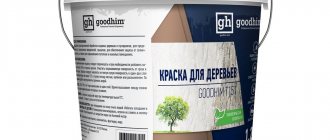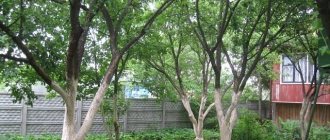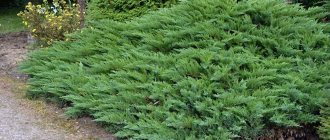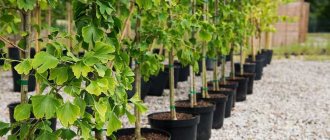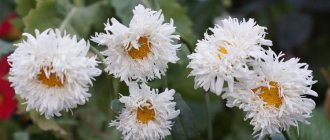Importance of the procedure
Work in the garden begins as soon as the snow melts - this is the most favorable moment for processing garden trees. About half a century ago, whitewash was applied to each trunk in the form of lime mortar. Now this composition has been replaced by a garden type of paint, more effective and practical. Trees should be painted twice a year - in spring and autumn. This ensures their reliable protection from external influences.
In early spring, it is important not to miss the moment when the snow has already melted and the soil has not yet warmed up. The need to comply with this condition is caused by the fact that insects wintering in the ground have not come out of hibernation. If you whitewash the trunk in time, they will not be able to climb it and harm the plant. Those pests that wait out the cold season in the folds of the bark, thanks to the paint, find themselves firmly sealed in it and soon die.
In autumn it is also very important to treat garden trees. The composition of the whitewash serves to protect the surface of the trunk from freezing, and with the onset of thaw, from overheating under the spring sun. Typically, painting is carried out when the air temperature drops to +2…+5°C.
Question answer
Does garden paint repel or kill pests?
Most formulations produced by manufacturers of garden paints for trees have a dual effect. They both repel and destroy insect pests.
How high from the ground should tree trunks be painted?
Tree trunks are whitewashed to a height of 1.5 m. The lower branches at the base of the trunk also need to be painted.
Are all garden paints rodent proof?
Garden paints have varying degrees of effectiveness in protecting tree trunks from rodents.
What is the protective period of garden paints?
Most garden paints have a protective effect from 1 to 2 years.
Why should tree trunks be treated in the spring before the ground completely thaws?
During this period, insects that have survived the winter in the ground do not yet lead an active lifestyle. It is possible to cover trees with a protective layer before their spring awakening.
Lime or paint?
In the recent past, all gardeners treated their plantings exclusively with a composition based on slaked lime. There is an opinion that using this method of protection runs the risk of harming trees, especially young ones. You can make a less concentrated solution, thereby reducing the possibility of damage. There is no point in giving up painting, as it is a very important part of garden care.
Lime whitewash can be purchased ready-made or made with your own hands. It is important not to forget to add the adhesive component - otherwise the composition will be washed off the trunk after the first rain. To make the mixture you need:
- dilute slaked lime in a ratio of 2 kg per bucket of water (10 l);
- add 250 g of copper sulfate;
- add 1 kg of fatty clay to the resulting mixture.
Sometimes cow dung is also added to the solution. The finished composition should have a consistency similar to liquid sour cream so that it does not flow down the tree trunk during the whitewashing process. If this happens, then you need to add a little more clay.
However, despite its simplicity and availability, lime tends to wash off fairly quickly, and it does not provide 100% protection against pests.
As an alternative to this method, special garden paint has been developed.
Spring whitewashing of trees
At the end of February or the first days of March, spring whitewashing is carried out: it is during this period that trees can heat up to eleven degrees during the day, and this leads to very early sap flow. And the temperature at night at this time can drop to minus ten degrees, and this leads to the sap freezing and tearing the plant tissue, causing frost holes to appear. The white paint used to cover the trunks of plants repels aggressive sun rays and thereby protects the bark from heating and prevents the trees from waking up at the wrong time.
Paints and solutions for whitening
Whitewashing of the garden can be done by the following means: water-dispersion paint, water-based paint or lime mortar. Whitewash for fruit plants must include the following components:
- White pigment, it can be lime or chalk. These components are white, and it protects the plant bark very well from sunlight.
- The base must be adhesive; it will act as a fixing pigment, which allows the composition to flow down.
- There should also be a fungicidal drug that will destroy infections in bark cracks.
If you whiten plants with lime, it will crumble or be washed off quite quickly, this is the main disadvantage of such whitewashing. It is for this reason that after whitewashing trees in the fall with a solution of lime or chalk, you have to do it again in the spring. If you choose paint for whitewashing, then this procedure will need to be done only once a year .
The main advantage of such paints is their durability: the paint forms a very durable coating on the tree trunk, vapor-permeable and breathable, it is quite resistant to sunlight and washing off.
The paint contains antiseptic, latex and white pigment. This water-dispersion coating forms a breathable layer on the trunk, but at the same time, such a layer does not allow ultraviolet rays to pass through, which are very harmful to fruit trees in the spring. This paint lasts on the plant for approximately two years, and this makes the gardener’s life much easier. Whitewashing of trees with water-dispersion paint is carried out at a temperature not lower than three degrees.
Both water-based and water-dispersion paints can be purchased in special stores. But such a durable whitewash can be done with your own hands; to do this, you need to mix two parts of PVA or bustylate glue and one part of kaolin or chalk and add to this mixture a preparation that contains fungicides. After you make the solution , you need to mix all the ingredients very well and add water to the mixture, in the end you should get a mixture whose thickness will be similar to oil paint.
Plant preparation
If for certain reasons whitewashing was not carried out for the winter, then in the spring you will have to not only cover it with paint or lime, but also prepare the plants and their skeletal branches before whitewashing. You will need to clear the plants of old bark; before doing this, you need to spread a cloth under the tree and carefully remove the dead bark with a wooden scraper. The entire trunk and lower branches will need to be processed. This should be done on a damp, non-sunny day.
The removed bark must be treated with disinfectants: on a clear and warm day, the trunk and main branches must be treated with Abiga-pik or a solution of copper sulfate, and you can also use HOM or Oxyx. The plant is sprayed with a fine spray and always from a close distance, this is necessary so that the moisture forms a mist that will very slowly settle on the bark and not flow down in streams. Do not forget that this procedure is carried out in the morning so that by evening the bark is already dry.
In addition, to disinfect plants with preparations that may contain copper every year, because the metal can accumulate in the bark, and as a result, its high concentration will become very harmful to the plant. To avoid this, it is necessary to alternate treatment with fungicides with a soap-ash solution; such a solution is not very harmful to the tree, but it cleans the bark very well. To prepare a soap-ash solution, you need three kilograms of ash and fifty grams of dishwashing detergent or liquid soap; all this must be diluted in water, the temperature of which is not less than eighty degrees.
If, while you were cleaning the bark, cracks or small wounds formed, they need to be treated with one of the following solutions:
- Two hundred grams of clay must be mixed with one hundred grams of mullein and very finely crushed straw, then all this must be diluted with water so that the mixture looks like thick sour cream.
- You need to take one hundred grams of rosin and two hundred grams of beeswax, these components need to be melted over very low heat one by one, after that they need to be combined and added one hundred grams of unsalted animal fat, and then everything needs to be melted and poured into cold water, then taken out and done lump
Methods for bleaching trunks
When all the required actions have been completed, whitewashing can begin. Some gardeners do not recommend whitening trees with young bark: they believe that the solution, which contains lime, burns the young bark of the seedlings.
The consistency of the solution for whitewashing plants in the garden should be such that the solution does not spread over the trunk, but sticks to it, and the thickness of the layer that is applied to the branches and trunk should be no less than two to three millimeters. If the applied layer is very thick, it will simply begin to peel off from the trunk, and you will have to start whitewashing the trees again.
But remember that whitewashing does not always benefit plants. If the seedlings are young and their bark is still completely smooth, then the mixtures will harm it and slow down its growth and development. But if you still want to whiten young plants, then choose environmentally friendly mixtures.
Tree paint is a special mixture that is used to coat tree trunks and shrubs to protect them from weather conditions and harmful insects. Unlike whitewashing, it does not require additional components or a lengthy preparation process. Preparing lime requires auxiliary manipulations and is accompanied by the likelihood of injury when slaking it. Precautions and protective items against splashes and burns will be required.
There are no such difficulties with paint. The container contains a ready-made product that must be diluted with water if it is too viscous. In this case, the amount of liquid should not exceed 5% of the total volume of paint. When applied, it forms a thin film through which air can pass. This keeps the tree's metabolic processes unchanged, but prevents the harmful effects of parasites, insects and bacteria.
Benefits of paint
Modern means have a number of advantages over proven, but rather outdated types of processing:
- They guarantee protection not only from insects, but also from rodents.
- Reliably protect the tree trunk from possible sunburn.
- The paint is suitable for absolutely any plant.
- Moisture resistance increases significantly.
- You don't have to worry about trees in severe frosts.
- Whitewashing with paint can be used in places where branches have been cut or broken instead of special means.
- Protects the trunk from harmful insects that settle in the folds of the bark.
- After treatment, you can forget about diseases such as fruit rot, rust, scab and many others. There is an option, in addition to standard whitewashing, to treat the entire crown of the plant with paint diluted with water (1:10) using a sprayer. This will not only prevent diseases, but also protect against acid precipitation and the appearance of lichen on the branches.
Stage II: disinfection
After cleaning the trunk, be sure to disinfect the entire cleaned surface , as well as those places where there are wounds and cracks. What is it for?
- Firstly, to destroy pests and pathogens that have already penetrated into secluded corners.
- Secondly, to disinfect new injuries that you may have accidentally caused to the tree when cleaning the trunks. After all, any wound is a wide gateway for infection.
How to disinfect
How to disinfect
There are several folk and chemical methods that are successfully used by experienced gardeners. Let's look at the most common and inexpensive ones.
Ash (ash-soap) infusion: dilute 2.5-3 kg of sifted ash in 10 liters of hot water and add 50-60 g of laundry soap for adhesion. Wash the trunk and branches when the liquid is still warm (it’s good if its temperature is above +40ºС).
Ash lye Thoroughly mix 2.5-3 kg of sifted ash in 10 liters of water, bring to a boil and leave to cool. All the liquid above the sediment is ash lye. For spraying trunks and branches, it is diluted in a ratio of 1:1 or 1:2.
Copper-containing drugs
- 3-5% solution of copper sulfate (dilute 300-500 g of copper sulfate in 10 liters of water);
- Bordeaux mixture (how to make it, read the article Bordeaux mixture and the rules for its production);
- "HOM" (fungicide of systemic-local and contact action) in a concentration of 30-40 g per 10 liters of water;
- "Oxychom" (a systemic contact fungicide with a broad spectrum of action) at a concentration of 20 g per 10 liters of water.
Iron sulfate solution Iron sulfate can be used in a concentration of 3-5% or 6-8%. To do this, you need to dilute 300-500 g of iron sulfate (or 600-800 g, respectively) in 10 liters of water
Attention! Although chemicals are effective, it is still not worth using them every year. Both copper and iron are not going away. They safely accumulate in the bark and soil, where they are washed away by precipitation, and eventually, having reached the “required concentration”, they become poison both for the tree and for us.
The most effective formulations
The most popular among gardeners is ordinary water-based acrylic paint. Thanks to its composition, it adheres perfectly to the surface of the trunk and at the same time allows the bark to breathe. It should be applied in warm weather, when the temperature rises above +5°C. It is also important to carry out treatment in the absence of precipitation and strong wind.
In addition to the basic protective properties, whitewashing with water-based paint protects plants from harmful microorganisms. To improve the effectiveness of repelling pests, you can add substances containing copper to the composition. Before application, acrylic paint must be thoroughly stirred and, if necessary, slightly diluted with water (maximum 10% of the paint volume). The trunk is treated in one layer, and for damaged areas it is important to use the composition undiluted.
The second fairly common type is “Luck” paint. It is moisture resistant and maximum safety for plants. This composition can be used to treat young trees once a year, and older trees once every two years. Easily applied using a brush or a regular roller. It is important to paint only in dry weather.
The common water-based paint “Almira” is applied under the same conditions as the types listed above. Before painting a tree, it is worth preparing the surface of the trunk: remove the old bark and treat the damage.
Rules for treating trees with garden paint
Beginners will be interested in learning how to properly paint trees with garden paint:
- At what height should wood be painted? An adult plant - the entire trunk (up to the skeletal branch), it is also necessary to process the lower branches to 1/3 of the length.
- Before treating with garden paint, trees need to be prepared: cleaned of lichen and moss, old paint or lime, removed dry bark, and treated wounds.
- Treatment is carried out only in dry weather, when the wind speed does not exceed 3 m/s. The trees should dry well, so choose the right day.
- The paint layer should not be dense. It is enough to walk over the surface once with a wide foam roller or a thick brush. Try not to make any omissions, so your trees in the garden will be reliably protected from the influence of weather conditions, diseases and pests.
- If for some reason the autumn treatment of the trees was missed, then at the end of February, beginning of March it is necessary to paint the trees with garden paint. As soon as the air temperature reaches +5-7°C, it’s time to get to work. If the trees were treated in the fall, then the next planned procedure is at the end of March, beginning of April. A third application of garden paint will not be necessary as the trees have already been treated with a durable compound that will last up to 12 months.
Preparing for work
Whitewash can be applied only to those plants that have already begun to bear fruit. Young seedlings purchased last season may not tolerate this procedure and die. They are usually wrapped for protection with any covering material other than plastic film.
Before starting processing, it is important to properly prepare the trees. They must be carefully cleaned of diseased and old bark, moss and lichen. To remove lichen, you can use a special solution. It is prepared as follows: 1 kg of salt, 2.5 kg of ash and two pieces of pre-crushed laundry soap are mixed in one container. Then you need to pour in a bucket of hot water and boil. Use a cooled mixture to wash off all the moss from the trunks. It is best to separate the old bark by hand, since the use of scrapers, brushes and spatulas can injure the plant.
If fresh damage is found on the tree, they must be treated with garden varnish. Instead, they often use a mixture of clay and manure, oil paint or beeswax with the addition of rosin.
Before you start bleaching, you can additionally coat the trunks with a disinfectant composition.
Stage I: Barrel Cleaning
Mosses and lichens have settled on many mature trees, especially on old trunks and the bases of lower skeletal branches. The bark is cracked and peeling. All this needs to be cleaned off. Experienced gardeners have special devices, but you can get by with improvised means.
The best methods of cleansing are gentle ones: with hands wearing fabric gloves or with a homemade washcloth made from plastic twine rolled up in several layers.
Cleaning the barrel with a plastic sponge
Cleaning is carried out in wet weather. Cracks and depressions are treated with a wooden knife or even a sharpened sliver so as not to injure the trunk. Proponents of this approach are categorically against metal brushes, scrapers and scourers. And even more so against cleaning with a hoe or saw blade, which can seriously injure the tree. Other gardeners have been using them for years and consider this the norm. It’s up to you to choose, the main thing is to follow the “do no harm” principle.
Barrel cleaning. Photo from the site supersadovnik.ru
In any case, before cleaning the trunk, you need to spread an oilcloth or thick cloth under the tree. Peeled moss, lichens, pieces of bark and the contents of cracks where pests have found a winter refuge fall on it. All this will need to be taken away from the trees and burned.
And here is a practical video tutorial on caring for fruit tree trunks:
Painting tools
When whitewashing plants with lime mortar, sponge brushes were usually used in the past. At present, they have practically been abandoned, using tools with artificial bristles of a similar shape to apply the compositions. They are in no way inferior to their predecessors, allowing you to quickly and efficiently paint any surface. Particularly resourceful gardeners carry out the treatment with several brushes tied together.
If you have to whitewash a large number of trees, especially old ones, then it would be wise to use a spray gun for this. In this case, it is necessary to apply the composition in two layers instead of the usual one.
Stage III: treatment (covering) of wounds
After cleaning the trunk, all the wounds of the tree are clear. Each is a magnet for all kinds of infections, so they need to be treated with a special ointment for reliable protection .
How to heal wounds
Gardeners use many different putties: clay mash, garden pitch, pastes and biomasks. They can be bought in specialized stores. For those who prefer to do everything themselves, we have prepared a separate list of recipes.
Garden pitch Used to heal and protect tree wounds from drying out, precipitation and infection.
Garden var
In our catalog, which presents products from large online gardening stores, you can choose garden varnish from various manufacturers. View a selection of garden varnish.
Ready-made pastes and biomasks These are special modern putties for protecting tree trunks from adverse weather conditions and pests.
- Garden paste "RanNet"
Putty paste for disinfection and healing of wood wounds. The composition includes copper sulfate and humate. Therefore, you can do without pre-treatment with copper-containing compounds. This paste is more convenient than homemade paste: it is ready to use, fits well and sticks perfectly.
- Garden putty "BlagoSad"
Universal putty from a Ukrainian manufacturer. It has proven itself very well. It is made on a natural fat basis, does an excellent job of healing wounds and stays on the trunk for a long time.
The following video is a tutorial on using the Robin Green silver biomask for treating wounds, preventing and protecting wood:
Acrylic whitewash. Choosing water-based paint
How to whiten a ceiling with water-based paint? First of all, you will need high-quality paint and varnish material. For proper processing, water-based coatings with different bases are used, obtained by using one of the technologies. Depending on the base, the following paint options are common on sale:
- Mineral. They are made using slaked lime or cement. This base is inferior in quality necessary for the decorative design of residential premises. Mineral compounds are used to whiten concrete ceilings of non-residential buildings. The low price of the material makes whitewashing an economical method of painting.
- Silicate. Paintwork materials with a liquid glass base. The role of the dye is taken by pigments of synthetic or natural origin. Durable coating that can last up to 20 years. The downside is that it is not resistant to humid environments. In rooms with a high percentage of humidity, ceilings coated with a silicate composition will quickly become unusable.
- Acrylic. Odorless coloring composition based on acrylic resins. The durability of the coloring material and the ability to withstand mechanical stress make this material attractive. The area whitened with acrylic composition can be washed with a soft sponge dipped in a soap solution. The protective film formed after drying does not allow steam to pass through. For this reason, you need to wait until the primer is completely dry before painting. It will be possible to whitewash plastered ceilings with acrylic composition only after 1-2 weeks.
- Silicone. Whitewashes with a silicone base are universal. They are used in rooms with high humidity. The ability of a dried coating to transmit water vapor through itself creates an advantage for silicone water-based paints, since they can be applied to non-dried surfaces. The protective layer obtained as a result of painting is not afraid of synthetic detergents - another plus in favor of silicone paint.
How long do Scandinavian paints last?
Wood painted with traditional Scandinavian compositions is repainted on average after 5–9 years . It is difficult to say more precisely, since the service life of the coating depends on many factors: the type of structures being painted, the type of wood, the intensity of exposure to moisture, the climate in the region, etc. In some cases, the paint retains its color saturation for 12 years or more, for example, if it is part of the facade protected by a porch and not blown by the winds.
Swedish paints are more durable due to the presence of drying oil in their composition, which better binds the other components and gives a light hydrophobic film. Finnish paint loses in this matter, but due to its open structure and breathable properties it allows it to better withstand fluctuations in humidity (wood, although it gets wet, also dries quickly). In this case, there is no risk of mold and fungi developing under the film.
Read this article for five more proven ways to treat wood against moisture and rotting outside.
As the paint ages, it loses color saturation and begins to chalk (get dirty). This occurs due to the degradation of the binder, which no longer holds the remaining components. Thus, the coating gradually becomes thinner, but does not peel off. Finishes that have served their purpose are easy to renew - this is another big plus of traditional Scandinavian paint. When re-applying, you do not need to thoroughly clean the surface, just brush it with a stiff wire brush, wash it with a hose and dry it well - after which the wood can be painted again.
Why do this?
As a rule, when the snow is gradually melting, you can open the “gardening” season - processing fruit trees.
Even “for King Pea,” people whitewashed each trunk with lime.
Due to the growth of technological progress, manufacturers of paint products have invented garden type paints, which are much better in their properties than lime mortar.
Experts strongly recommend whitening trees in autumn and spring. This way you can protect them well from negative external factors.
As soon as spring has already “taken the furrows of rule”, the snow is no longer visible on the soil, and the earth has not yet warmed up, you need to take advantage of the moment, since at this time insects begin to wake up after a long winter hibernation.
And if you do everything on time, then the likelihood of harm to your plants is extremely low.
Harmful insects that survive the cold in the bark, after painting with a special paint, will “stick” to it and eventually die.
Do not neglect the treatment of plants in the autumn season. Lime mortar can temporarily create a protective layer against freezing, and when it gets warmer, against overheating. Often coloring should be done at 2-5 degrees Celsius.
